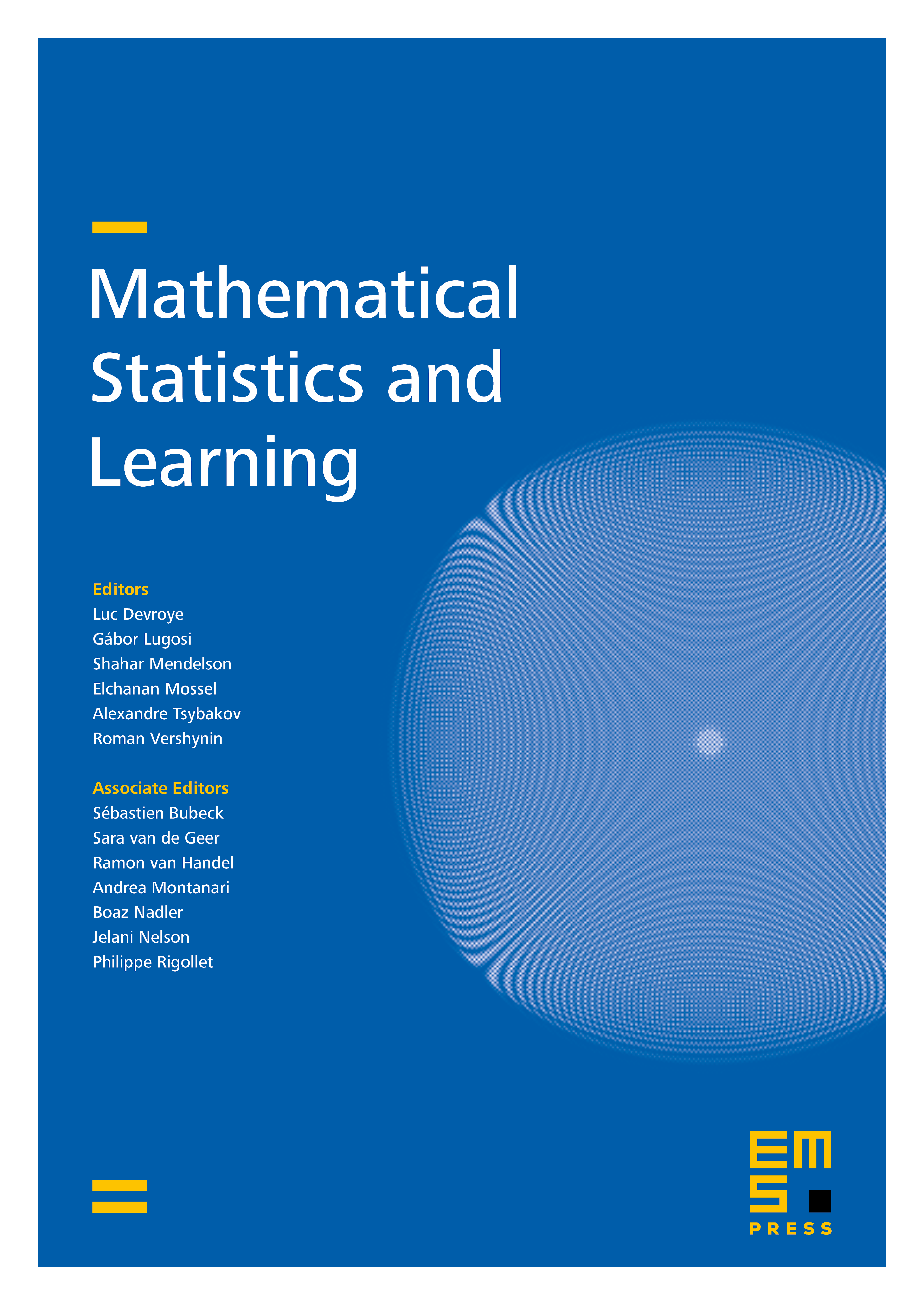The all-or-nothing phenomenon in sparse linear regression
Galen Reeves
Duke University, Durham, USAJiaming Xu
Duke University, Durham, USAIlias Zadik
Massachusetts Institute of Technology, Cambridge, USA

Abstract
We study the problem of recovering a hidden binary -sparse -dimensional vector from noisy linear observations , where are i.i.d. and are i.i.d. . A closely related hypothesis testing problem is to distinguish the pair generated from this structured model from a corresponding null model where consist of purely independent Gaussian entries. In the low sparsity and high signal-to-noise ratio regime, we establish an “all-or-nothing” information-theoretic phase transition at a critical sample size , resolving a conjecture of Gamarnik and Zadik (2017). Specifically, we show that if , then the maximum likelihood estimator almost perfectly recovers the hidden vector with high probability and moreover the true hypothesis can be detected with a vanishing error probability. Conversely, if , then it becomes information-theoretically impossible even to recover an arbitrarily small but fixed fraction of the hidden vector support, or to test hypotheses strictly better than random guess.
Our proof of the impossibility result builds upon two key techniques, which could be of independent interest. First, we use a conditional second moment method to upper bound the Kullback–Leibler (KL) divergence between the structured and the null model. Second, inspired by the celebrated area theorem, we establish a lower bound to the minimum mean squared estimation error of the hidden vector in terms of the KL divergence between the two models.
An extended abstract version of this work appeared at the Proceedings of the Conference on Learning Theory (COLT), 2019. http://proceedings.mlr.press/v99/reeves19a/reeves19a.pdf
Cite this article
Galen Reeves, Jiaming Xu, Ilias Zadik, The all-or-nothing phenomenon in sparse linear regression. Math. Stat. Learn. 3 (2020), no. 3/4, pp. 259–313
DOI 10.4171/MSL/22